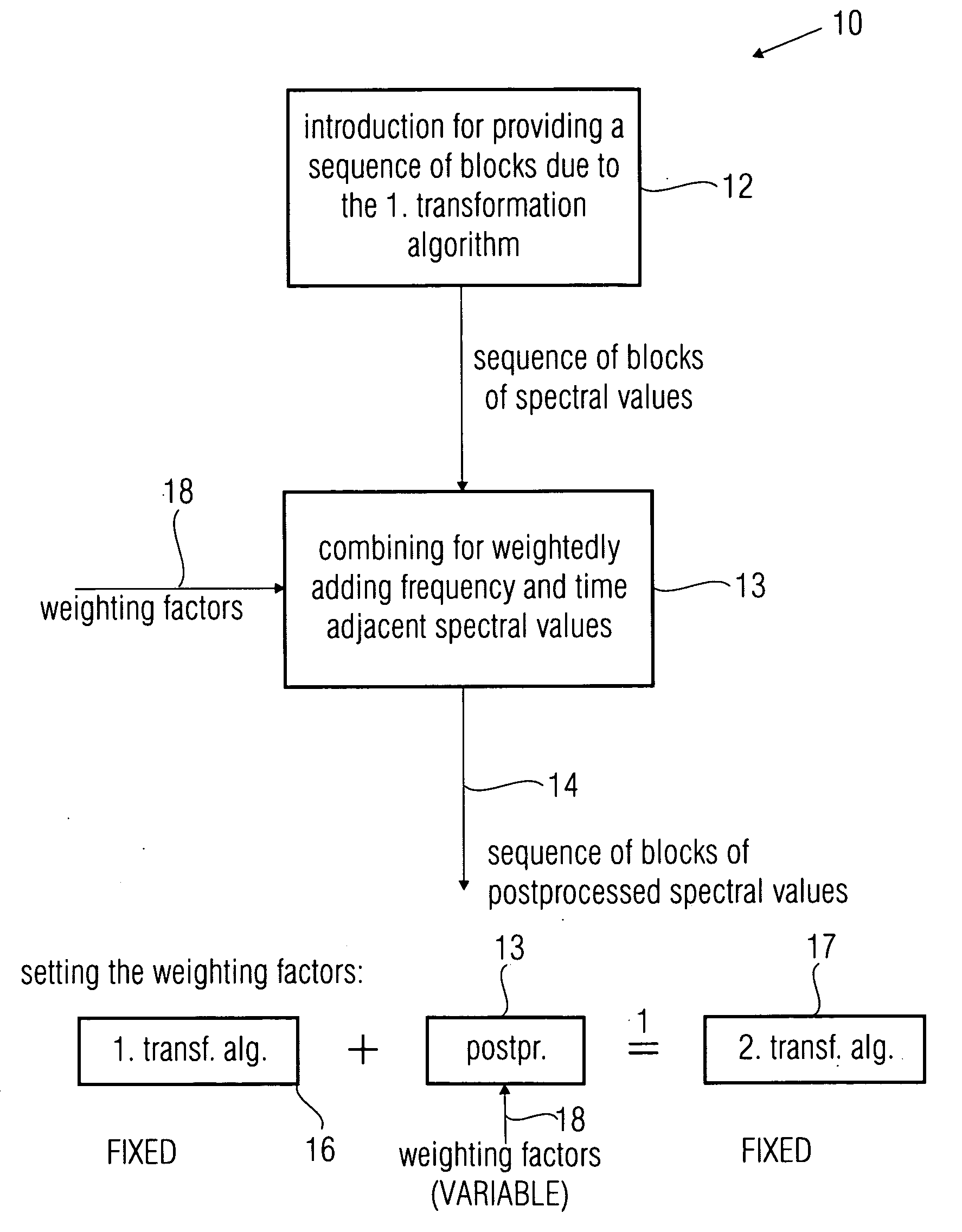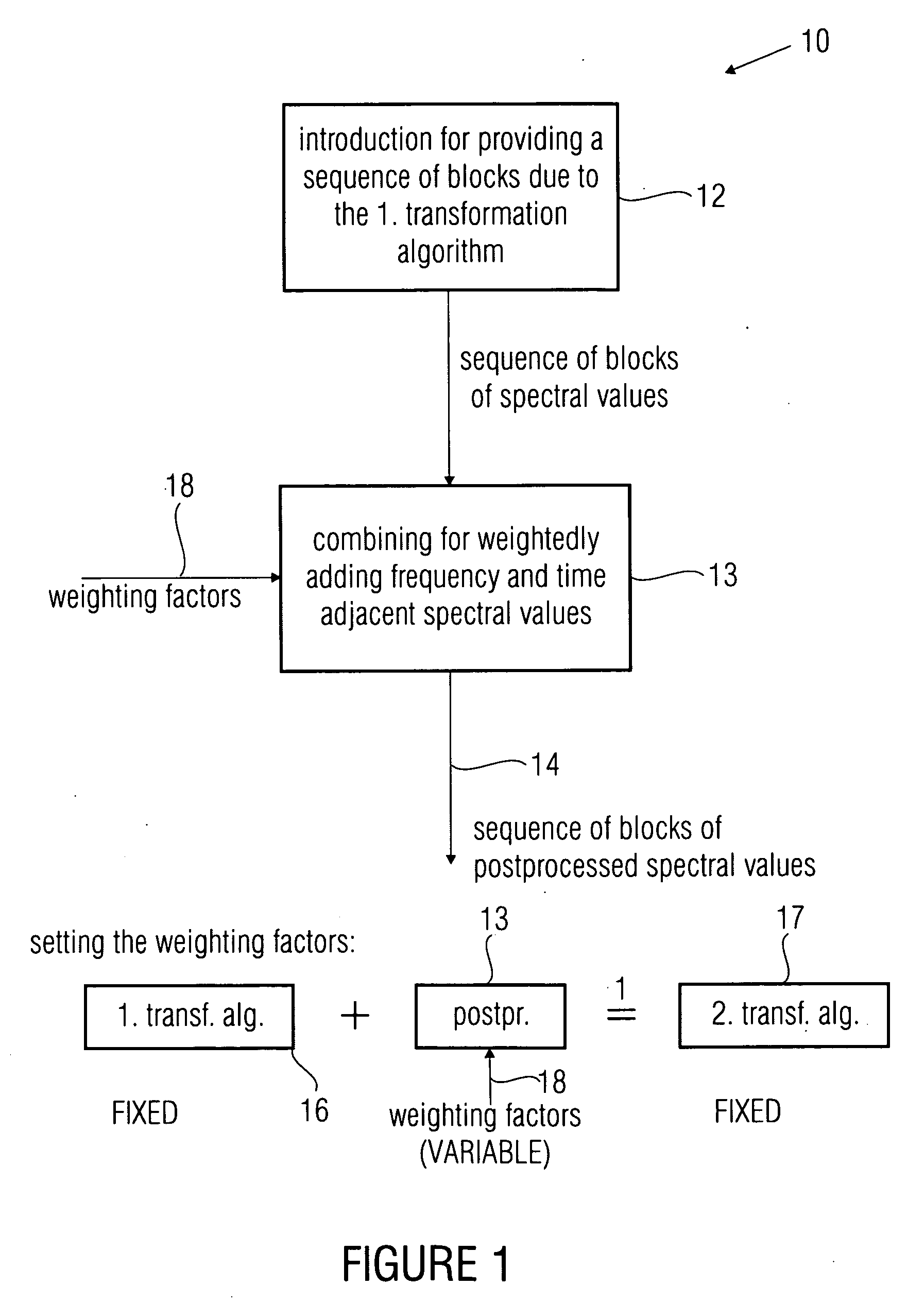Device and method for postprocessing spectral values and encoder and decoder for audio signals
a technology of encoder and decoder, applied in the field of devices and methods for postprocessing spectral values and encoder and decoder for audio signals, can solve the problems of high data compression, high signal loss, and easy aliasing of filtering, and achieve the effect of improving the quality of decoded audio signals
- Summary
- Abstract
- Description
- Claims
- Application Information
AI Technical Summary
Benefits of technology
Problems solved by technology
Method used
Image
Examples
Embodiment Construction
[0055]FIG. 1 shows an inventive device for postprocessing spectral values which are advantageously a lossy representation of an audio signal, wherein the spectral values have an underlying first transformation algorithm for converting the audio signal into a spectral representation independent of the fact whether they are lossy or not lossy. The inventive device illustrated in FIG. 1 or the method also schematically illustrated in FIG. 1, respectively, distinguish themselves—with reference to the device—by a means 12 for providing a sequence of blocks of spectral values representing a sequence of blocks of samples of the audio signal. In an embodiment of the present invention which will be illustrated later, the sequence of blocks provided by means 12 is a sequence of blocks generated by an MP3 filter bank. The sequence of blocks of spectral values is supplied to an inventive combiner 13, wherein the combiner is implemented to perform a weighted addition of spectral values of the se...
PUM
 Login to View More
Login to View More Abstract
Description
Claims
Application Information
 Login to View More
Login to View More - R&D
- Intellectual Property
- Life Sciences
- Materials
- Tech Scout
- Unparalleled Data Quality
- Higher Quality Content
- 60% Fewer Hallucinations
Browse by: Latest US Patents, China's latest patents, Technical Efficacy Thesaurus, Application Domain, Technology Topic, Popular Technical Reports.
© 2025 PatSnap. All rights reserved.Legal|Privacy policy|Modern Slavery Act Transparency Statement|Sitemap|About US| Contact US: help@patsnap.com



